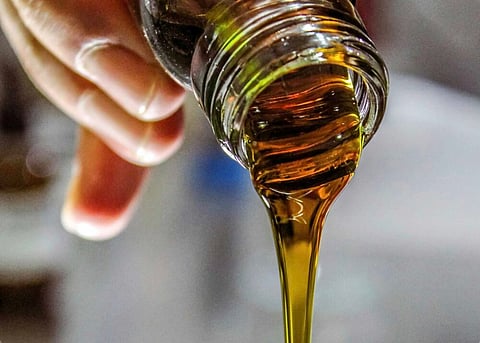

• There are as many olive oil varieties as there are grapes, and twice as much variability in taste.
• Italy has twenty different olive oil producing regions all with different character, taste and flavour.
• Italy has over 700 different native varieties of different cultivars
• The major olive oil countries in the Mediterranean are: Spain, Italy and Greece. They are the largest producers and the largest consumers, producing 4/5 of the world's crop. HOWEVER, while Italy exports to the major retail markets, exports from Spain and Greece are overwhelmingly used as wholesale to Italian "blenders".
• Olive oils found on the shelves at supermarkets are generally big-brand names exported in huge quantities and sold at low prices. Look for specialty shops selling high quality oils from single-estates who own their own land and olive trees, with their own on-site processing plant, along with their own bottling and labeling system. When one estate is in charge of their entire production chain, there is traceability.
• There should be evidence of affiliation to the regulations of the DOP system (the "protected designation of origin" ensures consistency of quality; olive variety; and essential qualities of the oil)
• Every bottle should have two labels: the front label sells and the back label tells. The back label should provide: the complete address of producer; description of cultivar used (be aware of "made from selected olives" because it means they can be bought elsewhere and not necessarily from that region or even from that country); lot and number for traceability; harvest date; expiry date.
* If you know only the selling date or the "best before" date, you still do not know when the olive oil was actually harvested!
* More than half of all the olive oil sold in North America's supermarkets is inferior product that has been "refined" — Do not be fooled!
• Hold the glass; warm it in your hand; look at the colour range from green to yellow. (Professional tasters use purple glasses so as not to be affected by the colour)
• Begin sniffing the oil for first impressions and to identify defects ( positive attributes are fruitiness, bitterness, pepperiness).
• Sip enough to roll around your mouth, suck in air to aspirate the oil (positive tastes are grassiness, nuttiness, artichokes, cardoons, citrus, ripe and unripe tomatoes, tomato stem or leaves, aromatic herbs, basil, mint, rosemary, dried fruits, fresh and unripe almonds, apples, green apples).
• Feel its consistency and texture, from thick and viscous to thin and runny. This can determine how to use with food
• Swallow and taste pepperiness in back of throat
*Defects include: rancidness caused by oxidation; wineyness caused by anaerobic fermentation; mold caused by bad storage; muddiness from decayed sediment.
• Rich in antioxidants, phytochemicals, polyphenols, tocopherols, flavonoids and squaline.
• High levels of mono and poly unsaturated fats.
Read more: